Lecture X.a--Late Victorian Scribblers
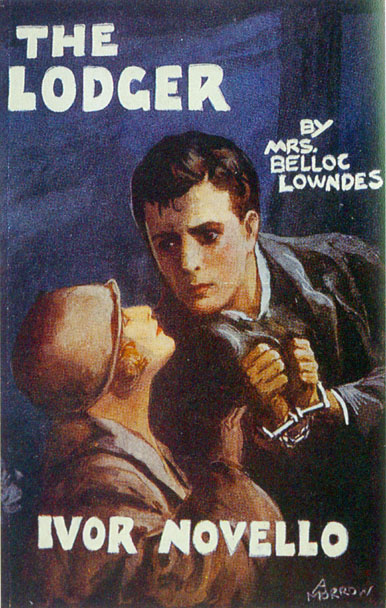
Late Victorian Scribblers -continued
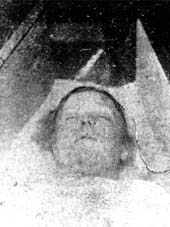
Polly Nichols, as her friends knew her, was born in 1845. She
was killed by Jack the Ripper on the night of the 31st August
1888 in Buck's Row, London.
She had her throat cut and her abdomen had been savagely cut, exposing the intestines. She was examined by Dr
Llewellyn. She had married to William Nichols and they had five children.
They had separated in 1882. She was buried in the Ilford Cemetery on 6 September 1888.
see
the other victims

Marie Belloc Lowndes (1868-1947)

The Lodger
e-text
of The Lodger
"Lover and friend hast thou put far from me, and mine acquaintance into darkness."
PSALM lxxxviii. 18
Like Marie Corelli, Marie
Belloc Lowndes comes out of the late-Victorian sensationalist mode, but she
is a slightly later, more pragmatic version, with the Edwardian penchant for
gruesome detail and protracted suspense.
Marie Lowndes was born in
France. She was the daughter of a lawyer and Bessie Rayner Parkes,
prominent Brisits writer and campaigner for women's rights. Her
brother was Hillaire Belloc. Even though she had little formal
education, she began writing at age 16 - mainly journalism. She
married The Times journalist Frederick Lowndes and had three children.
By the time of her death, she had written sixty books, four of them
novels. Her novels established her as a crime writer. Chink in the
Armor (1912) and The Lodger (1913)are considered her best. [ Her character,
Hercules Popeau, anticipates Agatha Christie's famous detective, Hercules
Poirot.] The Lodger was the first, and perhaps the best, crime novel
based on the Jack the Ripper murders of 1888.
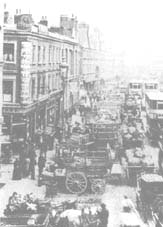
This is a brief review of the Jack the Ripper murders that occurred in London more than a hundred years ago. Much of the original evidence gathered at the time has been lost, and many "facts" are actually opinions by the various writers who have written about the case during the past century. Many aspects of the case are therefore contested, and so what follows is a summation of the case in general. There are many books available to the student of crime who wishes to grapple with the
many mysteries associated with the case.
"Jack the Ripper" is the popular name given to a serial killer who killed a number of prostitutes in the East End of London in 1888. The name originates from a letter written by someone who claimed to be the killer published at the time of the murders. The killings took place within a mile area and involved the districts of Whitechapel, Spitalfields, Aldgate, and the City of London proper. He was also called the Whitechapel Murderer and "Leather Apron."
The Lodger in Story and Fact
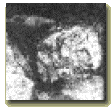
In January 1911, McLure's Magazine published a story by Marie Belloc Lowndes entitled "The Lodger." The story revolves around a retired couple, both formerly servants who make extra income by renting out rooms in their home. Unsuccessful as landlords and facing the prospect of hard times, they are saved when a single gentleman rents their upstairs rooms at a higher rate than usual. The extra money permits the husband to once again indulge himself in a daily paper wherein he follows closely a series of murders of harlots committed by a madman calling himself "The Avenger."
The new lodger is a quiet gentleman who is a bit idiosyncratic. Deeply religious, he spends his days reading the bible aloud. He is given to nocturnal wanderings, leaving the house late and not returning until early morning. On those nights when he is at home, he conducts strange experiments on the gas ring in one of his rooms.
The wife becomes suspicious. Noting that her lodger's late night disappearances coincide with the murders, she begins to believe that he is "The Avenger."
Thus was born for the public the mythical lodger who turns out to be Jack the Ripper. The strange, bible quoting gentleman with the deep seeded hatred of whores, who spends his days alone and spends his nights prowling the city for prey. Belloc Lowndes story went on to become a best selling novel and no less than three films have been based on it. One of
these films, "The Lodger, a Story of the London Fog," was made by a young Alfred Hitchcock and is generally excepted as the first truly Hitchcockian film.
Mrs. Belloc Lowndes is supposed to have gotten the idea for this story by overhearing a snatch of dinner conversation wherein one guest was telling another that his mother's butler and cook claimed that had once rented rooms to Jack the Ripper. But the story of the lodger appears well before Mrs. Belloc Lowndes and, as recently put forward by Stewart Evans and Paul Gainey in their book, "The Lodger, The Arrest & Escape of Jack the Ripper" it may very well have more fact behind it than originally thought.
Prior to Belloc Lowndes the story had already been put forward by at least two people:
Lyttleton Stewart, Forbes Winslow and the painter Walter Sickert. Both of these tales contain the same essential ideas and "facts" and suggest that the story had reached the level of urban myth within a few years of the Whitechapel murders.
Forbes Winslow was the son of a doctor who specialized in lunacy. He followed in his father's practice and became a leading alienist. In his memoir "Recollections of Forty Years," as quoted in Donald Rumbelow's "The Complete Jack the Ripper." he describes himself as a medical theorist and practical detective. A description not unlike that given to the medical doctor upon whom Conan Doyle based Sherlock Holmes.
Forbes Winslow became engrossed in the Whitechapel murders. "Day after day and night after night I spent in the Whitechapel slums. The detectives new me, the lodging housekeepers
knew me, and at last the poor creatures of the streets came to know me. In terror they rushed to me with every scrap of information which might be of value. To me the frightened women looked for hope. In my presence they felt reassured, and welcomed
me to their dens and obeyed my commands eagerly, and found the bits of information I wanted."
Using his experiences with those suffering from homicidal-religious mania and foreshadowing the modern practice of psychological profiling, he claims to have constructed an imaginary man whom he now set about to find.
In 1889 Forbes Winslow connected with a Finsbury Street lodging house keeper named Callaghan who told him of a former lodger, G. Wentworth Bell Smith, who had rented a large room from him in April 1888. According to Callaghan, Smith was a Canadian and he went on to describe him as 5' 10" tall, dark complexioned with a full mustache and beard worn closely cropped. He walked with a curious weak-kneed, splay-footed gait. Smith's dress and manners suggested a man of some gentility. Callaghan also said that Smith was multilingual and had a foreign appearance.
The landlord was told by Smith that he was in England on business and might stay an indefinite period of time. He requested and received a house key. Soon the landlord and his wife began to take notice of their tenants behavioral idiosyncrasies. He changed clothes several times a day, wearing a different suit and one of three pairs of rubber soled boots each time he went out. He kept three loaded revolvers in his room. He frequently railed against the women of the street and once filled fifty or sixty sheets of foolscap paper with his disgust for "dissolute women." These ramblings were punctuated with a mixture of
morality and religion which he often read to his landlord.
On August 7, the night of the Martha Tabram murder, he arrived at his lodgings at 4:00 AM, explaining the lateness by claiming that his watch had been stolen in
Bishopsgate, which later proved untrue. In the morning the maid found bloodstains on his bed and noticed that the cuffs of his shirt had recently been washed. Soon after Smith left his lodgings saying that he had to return to Canada, but it was known that he remained in England.
It was in August of 1889 that Callaghan, who had in the mean time moved, was told by a woman that she had been approached by a man in Worship Street who had offered her one pound to accompany him down a court. She refused, but soon after there had been another murder. The woman told Callaghan that she had recognized him as a man she had
seen coming and going from Callaghans Lodgings in Finsbury Street. Callaghan immediately assumed it to be Smith and told this to Forbes Winslow. Since he perfectly matched the man Forbes Winslow had in mind, he knew he had his man.
According to Forbes Winslow's written story he went to the police with his information. He claimed that the man could be captured at Saint Paul's Cathedral, where he went ever day at 8:00 AM. He said that if the police would not cooperate with him he would publish his story. According to Forbes Winslow the police didn't cooperate and he published in the form of an interview in the New York Herald Tribune. In the interview he showed the reporter a pair of rubber soled, bloodstained boots saying they belonged to Jack the Ripper. (*We assume he had the boots from Callaghan.)
When the English press picked up the story Scotland Yard dispatched Chief Inspector Swanson to interview Forbes Winslow who immediately began to back-peddle. He said the story printed in the paper was not accurate and misrepresented the entire conversation between himself and the reporter. He claimed the reporter had tricked him into talking about the case. In truth, Forbes Winslow had never given any information to the police with the exception of an earlier theory of his involving an escaped lunatic. A theory which even Forbes Winslow had abandoned. He showed the boots to Swanson and they turned
out to be canvas topped boots the tops of which were moth eaten and the molt of the moth still adhering to the tops. No bloodstains.
In "The Jack the Ripper A-Z" it is suggested by the authors that Smith was an agent of the Toronto Truss Company which had offices in Finsbury Street. He kept another office on Saint Paul Street. Eccentric as he may have been and resident in London at the time of the murders, there is nothing to connect him in any way with the murders. Indeed, at Five foot ten and fully bearded, he doesn't match either Mrs. Long's or
Lowndes' description of the murderer.
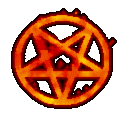
oh well, if you want to know the real details,
you can visit the Jack
the Ripper Casebook .
--or see the 1944 movie, which you might be able to rent!--
HE LODGER (1944/TCF.) 84mins. BW. US.
Credits: Dir: John Brahm; Prod: Robert Bassler; Sc: Barre Lyndon; Ph:
Lucien Ballard; Ed: J. Waton Webb; Des: James Baseri & John Ewing; Mus:
Hugo W.Friedhofer.
From the novel by Marie Belloc Lowndes.
Cast: Laird Cregar, Merle Oberon, George Sanders, Cedric Hardwicke, Sara
Allgood, Aubrey Mather, Queenie Leonard, Helena Pickard, Lumsden Hare,
Frederick Worlock, Doris Lloyd, Olaf Hytten, Billy Bevan, Wilson Benge
Cyril Delevanti, Skelton Knaggs.
In 1880 London, a mysterious lodger, (Cregar), in the Whitechapel area is
suspected of being the notorious murderer Jack the Ripper.
A superb portrayal by Cregar in this third version of the famous novel with an
excellent supporting cast in impressive Victorian, fog enshrouded sets.
Cregar died at the age of 28 after a crash diet ordered by the studio in
preparation for his role in Hangover Square (1945).
and from Jack the Ripper As the Threat of Outcast London
Robert F. Haggard
There was a strong perception among middle class reformers that there was a close connection between the common lodging
houses and prostitution in London. One writer expressed it this way, "want first, exigency next, bad companions in low
lodging-houses next, and the fatal step--the last
[prostitution]." Both prostitution and lodging houses flourished in the East
End. Whitechapel contained sixty- three brothels, 1,200 known prostitutes (a conservative estimate), and 233 common lodging
houses capable of holding 8,500 people. In addition to those who chose prostitution as a full-time profession, many women
engaged in certain low paying trades (specifically needlewomen, shopworkers, actresses, seamstresses, and
lacemakers) resorted to "casual prostitution" in times of economic hardship.
Josephine Butler, the leader of the opposition to the Contagious Diseases Acts, disapproved of and spoke out against such
attempts to legislate morality. Furthermore, The Pall Mall Gazette published a letter arguing that it was "impossible to do
anything furthering morality by the law of the land without also touching the economical relations of
society." No one heeded their pleas. Parliament raised the age of consent from thirteen to sixteen, and attempted to crack down on houses of ill-repute.
Between 1885 and 1914, 1,200 brothels were prosecuted annually in England and Wales; between 1875 and 1884, the
average had been eighty-six per year. Even though the head of the Metropolitan Police, Sir Charles Warren, tried to initiate a
policy of laissez-faire towards prostitution in the summer of 1887, two hundred brothels in east London were closed in that year
as a result of the actions of the government and various purity groups. Coming shortly before the outbreak of the Jack the
Ripper murders, these closings rendered "thousands of women homeless, hence vulnerable to attack, and certainly [made] the
lower stratum of prostitution . . . even more precarious as a means of
subsistence."
Continue
with Lecture X.
|





